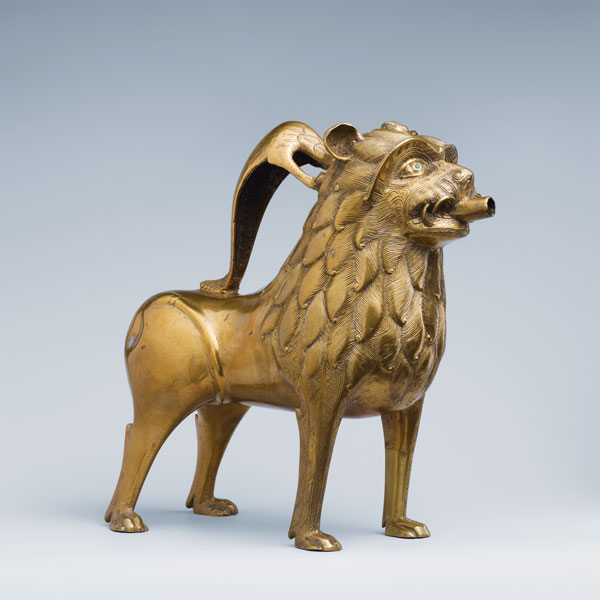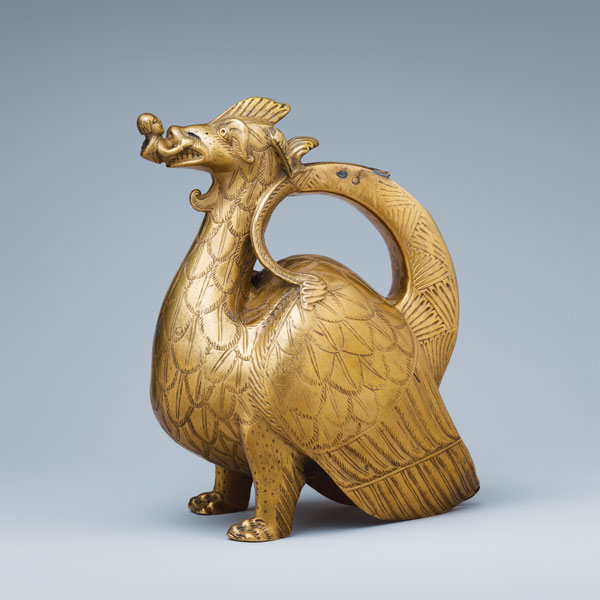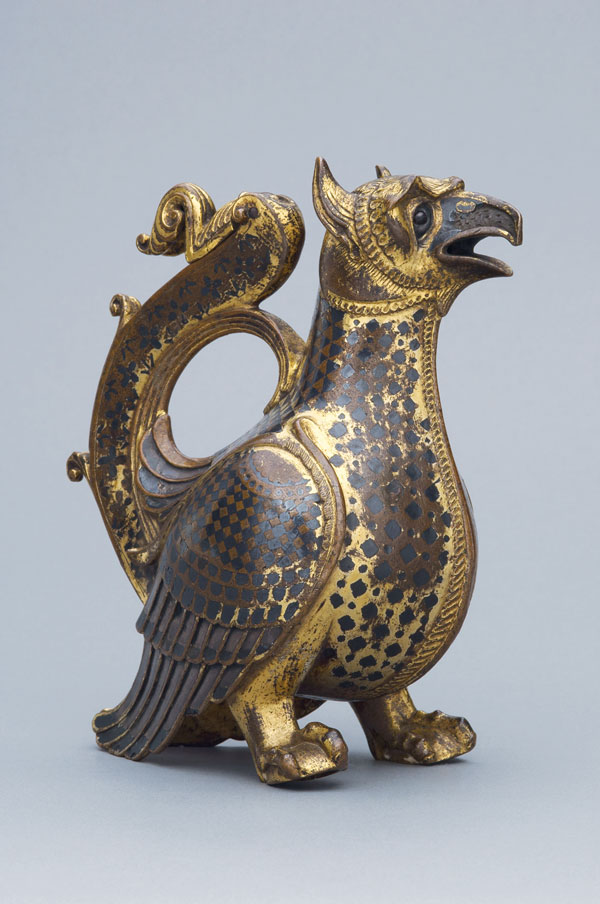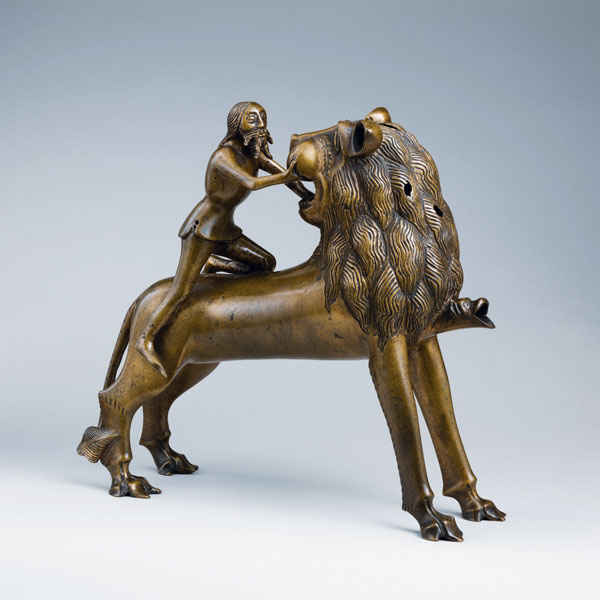Always Wash Your Hands
Writer Leslie Gilbert ElmanAquamanilia were created for the purpose.
From ancient Rome and Islamic cultures to the Byzantine empire and medieval Europe, ritual hand-washing was done for both symbolic and sanitary reasons (probably more of the former, if we’re being honest). It was a ceremony, and every ceremony calls for ceremonial objects. For washing the hands we have the aquamanile.
An aquamanile—formed from the Latin words for water (aqua) and hand (manus)—is a vessel made specifically to hold water for hand-washing. Of course it would have been possible to use an ordinary ewer for the purpose, but where’s the fun in that? It hardly compares to washing your hands with water flowing from the mouth of a lion, a dragon or a griffin. Even priests in medieval Europe, who comprised the biggest market for aquamanilia (the proper plural), washed their hands during mass using these vessels in the shape of mythical beasts.
Lost Wax, Found Beauty
Many of the aquamanilia you’ll see today date back to the Middle Ages. They’re fashioned mainly from copper or bronze (an alloy of copper and tin with other metals) using the lost wax, or cire perdue, casting process—itself worthy of attention because it’s so time-consuming, so complicated and so very, very old.
The process begins with an artist making a model of an object in wax or clay. That object is then coated with plaster to make a mold. After it dries, the mold is removed in pieces and the insides of those pieces are coated with hot wax. The wax is left to cool then reassembled to create a hollow figure that is then filled with plaster and sand to make a solid core that’s held in place with metal pins. Wax rods are attached to the wax figure, another plaster mold is shaped around the outside of the hollow wax figure and the rods, then the whole thing is fired in a kiln to melt the wax inside the mold. The wax drips out (is “lost”) and what remains is a hollow plaster mold with channels created by the wax rods.
Molten bronze is poured into the hollow mold through the channels, filling all the spaces inside. When the bronze cools, the mold is opened, the pins are removed, the channel holes are filled in, and the surface of the object is finished and polished.
It’s an effective if complicated process that’s still used today, and even more remarkable when you consider that it’s been in use since at least the 4th century B.C.
Fantastical Beasts
In the Middle Ages, northern Germany was known for its outstanding metalwork. Thanks to the patronage of the 12th century Duke of Saxony Henry the Lion and the powerful bishops of Hildesheim, workshops in Lower Saxony were commissioned to produce all sorts of metalwork objects for religious use, including aquamanilia. Following the influence of the church, the aristocracy adopted the use of aquamanilia for themselves, making a show of washing their hands before meals. Thus, hundreds of aquamanilia were made in Europe, mainly in Germany but also in the region of Lorraine and the Meuse Valley in France, in the Netherlands and in Scandinavia.
Their fantastical beast forms were a direct influence from Islamic cultures that Europeans knew happily from trading relationships and less congenially from the Crusades. Lions were the most common figures (perhaps Duke Henry the Lion influenced that choice). Dragons and griffins—a half lion, half eagle—also were common, as were human figures, from knights on horseback to biblical heroes such as Samson.
The production process was painstaking and the workmanship is exquisite, but what makes aquamanilia so appealing is their sense of whimsy. Yes, they were made mainly to be used in religious ceremonies, but imagine the joy an artist could find in devising cheeky ways to fill and dispense water from an aquamanile. A seated lion aquamanile in the collection of the Museum für Kunst und Gewerbe in Hamburg, Germany, is filled through its ear and pours water from its nostrils. A human figure clutched in a dragon’s teeth forms the spout of an aquamanile at the Metropolitan Museum of Art. Horse-and-rider figures often are filled through an opening in the rider’s head.
Prices can be high when aquamanilia come up for sale or at auction, but you will find plenty of examples in museums where you can pour your appreciation upon them.
Leslie Gilbert Elman is the author of Weird But True: 200 Astounding, Outrageous and Totally Off the Wall Facts. She writes about antiques and other subjects for Design NJ.




